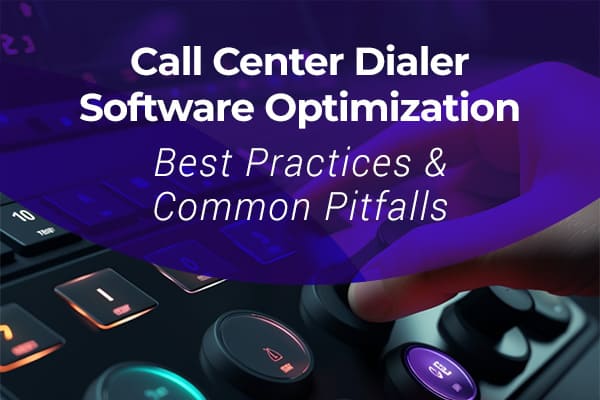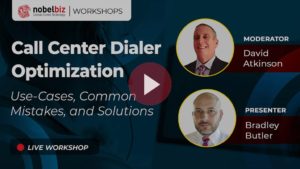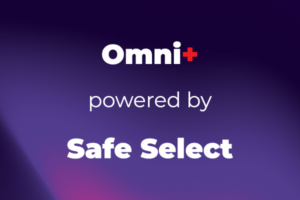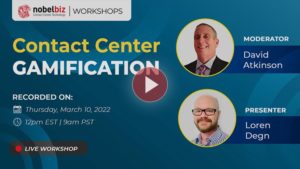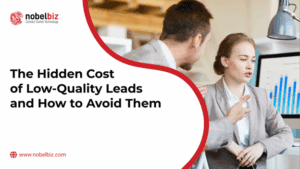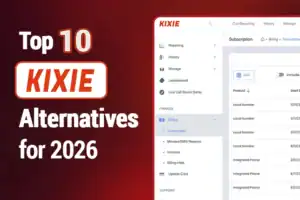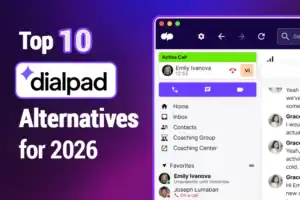Contact centers play a vital role in today’s business landscape, serving as a primary point of contact for customers to resolve issues, make inquiries, or provide feedback. However, running an efficient and effective contact center requires more than just hiring skilled agents and investing in advanced technologies. One critical aspect that companies must consider is the optimization of their dialer system, which can significantly impact call center operations’ productivity and performance.
In this blog post, we’ll delve into the world of call center dialer optimization, discussing various dialing strategies, common pitfalls, and how to effectively optimize your call center operations for maximum efficiency.
We’ll share valuable insights from one of our workshops featuring two seasoned contact center experts, David Atkinson, and Bradley Butler. Let’s begin by understanding the importance of dialer optimization and its impact on contact center performance.
Understanding Dialers and Dialing Strategies
A dialer is a software application designed to automate the process of calling phone numbers by using predetermined calling and routing rules. The main goal of a dialer is to increase calling efficiency by eliminating manual tasks such as waiting for a voicemail or deciding whether to leave a message. There are several types of dialing strategies, including preview dialing, progressive dialing, and predictive dialing, each with its own set of benefits and drawbacks.
Some of the main goals of a dialer:
- Increase Calling Efficiency
- Reduce costs
- Reduce human error
- Maximize agent talk time
- Increase Conversion Rate
The more advanced types, such as the Predictive Dialer, can potentially detect and filter out disconnected numbers, busy lines, answering machines, and unanswered calls.
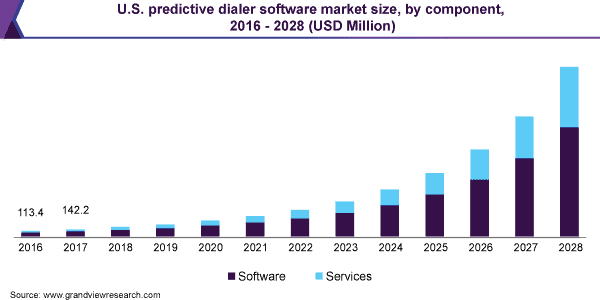 Benefits of using an Auto Dialer
Benefits of using an Auto Dialer
There are good reasons why the global predictive dialer software market is expected to grow at a compound annual growth rate of 37.0% from 2021 to 2028 to reach USD 12.2 billion by 2028. – Source
Let’s look at some of the most important benefits of using auto-dialer software.
Improving Efficiency
It is estimated that a salesperson makes 52 calls daily (with 15% of the time dedicated to leaving voicemails).
In a regular set-up, where agents manually select, dial, and wait for the call to connect is estimated that a total of 36 hours is being wasted each month – per rep. It’s easy to see how an automated tool to select prospects, dial, and route the call can optimize the outbound process.
For example, Predictive dialers can reduce the time between calls to just 3 seconds, saving an average of 45 minutes per day PER AGENT.
If you have 15 agents, that is a total of 11.25 additional hours of team talk time PER DAY… or 56.25 additional hours of talk time per 5-day work week.
Without even diving into the technology or settings, the simple fact of introducing an autodialer in its most simplistic form can bring a tremendous return on investment. – Brad Butler, Contact Center Software Consultant @ NobelBiz
Improved Agent Productivity
Long wait times can be a significant challenge for contact centers, causing negative consequences for both agents and customers. When agents are left waiting for long periods before connecting with clients, they can become bored, disengaged, and demotivated. This ultimately impacts the quality of the customer service they provide. To mitigate these issues, many contact centers use dialers to eliminate unwanted wait times. By automating the dialing process, dialers can connect agents to customers quickly, reducing wait times and keeping agents engaged.

Dialers can also streamline the process of pulling client data out of the CRM. For example, preview or automatic preview dialers can show client information to the agent before the call is dialed. This feature allows agents to familiarize themselves with the client’s history and specific needs, allowing for more personalized and effective interaction.
As an operations director before, half of my job was being a cheerleader. I had to actively fight against the boredom and disengagement that agents experience… A good dialer system can keep their flow, their mojo, and their momentum going. – Brad Butler, Contact Center Software Consultant @ NobelBiz
Another significant advantage of using dialers is that they can be designed to provide a streamlined experience for agents. Every step of the process can be calibrated to minimize the agent’s effort, from dialing the number to logging the call in the CRM. This automation can not only reduce wait times but also free up agents’ time and mental bandwidth, allowing them to concentrate more on problem-solving and less on administrative tasks. With dialers, contact centers can greatly improve their operational efficiency, leading to a more satisfied customer base and happier agents.
Customer Experience
Generally speaking, automated dialers can have a significant impact on the customer experience. By minimizing the time agents spend looking up client information manually, they can focus more on the conversation itself, improving the quality of the customer experience. Here are some other benefits:
- Reducing wait times and dropped calls
- Connecting customers with the right agents based on their needs and preferences
- Providing self-service options for common queries
- Enhancing agent performance and productivity
- Improving customer satisfaction and loyalty
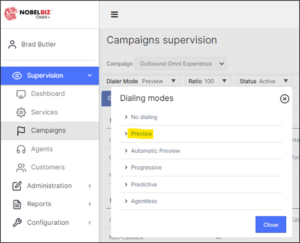 Types of Dialing Strategies
Types of Dialing Strategies
Different dialing strategies can help call centers in various industries optimize their outbound campaigns and improve customer satisfaction. As we saw, dialing strategies are the methods of automatically dialing pre-programmed phone numbers based on certain criteria and logic. Let’s dive a little deeper into the specifics of each type.
Click-to-Dial (aka Preview Dialing)
Best for campaigns requiring thoughtful calling processes or complex sales, agents can review client information before manually initiating a call.
When using Click to Dial, client information is displayed to the agent alongside the contact information. After reviewing the data, the agent decides if and when to make the call.
Use Case:
Although Click to Dial is one of the more straightforward dialing methods, it is probably the best choice for campaigns that need a more thoughtful calling process, such as complex sales or any type of call that requires some preparation beforehand.
General Benefits:
- Fewer dropped calls
- Shorter delays between calls
- A better sales approach with data-driven information
- Automation with CRM and leads lists to save time
Automatic Preview Dialing:
Automatic Preview dialing allows agents to view information about the contact they are about to call, giving them time to prepare for the conversation. This can be useful in targeted sales approaches or customer service scenarios where agents need to familiarize themselves with the customer’s background.
Unlike Predictive Dialing, where the system dials more numbers at once and transfers the one that connects, Automatic Preview Dialing dials on a 1-to-1 ratio while displaying client data to the agent within the Agent Dashboard.
Use Case:
The Automatic Preview Dialer is highly versatile, adding time efficiency to complex campaigns where agents need to review client data before the call, take notes, personalize scripts, and so on.
General Benefits:
- Reduced wait times and dropped calls
- Increased agent productivity and efficiency
- Improved sales approach and customer experience
Progressive Dialing:
The Progressive Dialer goes to work as soon as an agent is available. Calling ratios are set by administration or supervisors to adjust the number of calls the dialer makes PER AGENT. A progressive dialer is a type of call center dialer software that automatically dials one number per available agent and connects the agent only when a live person answers the call.
- Answering machine detection is adjustable to either disconnect a call or drop a pre-recorded voicemail.
- Requires Larger amounts of data to “churn” if higher ratios are set.
- Abandon Rate must be monitored as progressive dialing does not measure agent or customer statistics.
Besides the ratio optimization, another benefit of the progressive dialer is that it gives agents a few seconds to review the contact information and history before placing the call. This helps agents tailor their approach and offer solutions that match the customer’s needs and expectations. It also helps agents build rapport and trust with the customer.
Progressive works best in an environment where you use large data lists and there is a sufficient agent overflow to capture connects. When it’s set up properly, the progressive dialer can be one of the most efficient methods of increasing your percentage. – Brad Butler, Contact Center Software Consultant @ NobelBiz
Use Case:
Progressive dialing is useful when a center has large data lists to dial through and plenty of overflow agents to capture connects. When set up correctly, Progressive can be one of the most efficient methods of increasing the connection rate.
Predictive Dialing
This advanced strategy uses algorithms and historical data to predict agent availability and adjust the number of lines called out per agent accordingly. This can be a powerful tool for outbound campaigns but requires careful monitoring and management to avoid abandoned calls and maintain compliance.
Predictive Dialer will use predictive statistical data of an agent’s dialer tendencies and customers’ data to determine when and how many calls to place from the dialer. It achieves this by adjusting calling ratios in real-time. Its main goal is to send agents confirmed connects or “hellos” methodically and consistently.
Agent-related data includes statistics like average talk time, wrap-up time, and “call ready” rhythms to learn when to reach out to multiple contacts simultaneously. It then delivers connects / “Hellos” to a single agent or group of agents in a pre-determined algorithm.
Customer-related data include filters based on demographics and historical connection rates based on time of day to determine how many lines to call out per agent.
Use Case:
Because it tends to get better and better as more data is thrown at it, the Predictive Dialer performs best with large outbound campaigns, usually suited for the B2C niche.
General Benefits
- It boosts productivity by reducing the time spent on manual dialing and waiting for busy signals or voicemails.
- It reduces idle time by using algorithms to predict when an agent will be available and timing the next dial accordingly.
- It boosts sales by increasing the number of qualified conversations and opportunities per hour234.
- It enhances customer service by connecting customers to live agents quickly and avoiding dropped calls.
- It increases lead generation by filtering out unqualified numbers and organizing lead data, and call back information.
- It reduces operation costs by optimizing the use of resources and minimizing wasted calls13.
- It analyzes call data for insights by tracking various metrics such as call duration, call outcome, and agent performance.
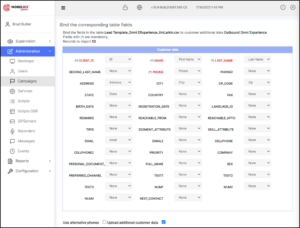 Common Oversights and Pitfalls
Common Oversights and Pitfalls
Contact center managers often get excited at the thought of implementing an automated dialer to boost their productivity and customer experience. However, there are a few prerequisites you need to be aware of before launching your first automated dialing campaign.
CRM-Related Problems
1. Outdated Call Information: unused or outdated telephone numbers need to be removed periodically.
- Establishing “FINAL DISPOSITIONS” can streamline the process of organizing contacts within a dialer.
- Old data can clog a dialer’s effort in any dialing strategy.
Creating the right fields and labeling and formatting them correctly is often an oversight that I’ve seen with many contact centers in the past, preventing them from really reaping the full benefits of an automated dialer. – Brad Butler, Contact Center Software Consultant @ NobelBiz
2. Failing to create contact fields necessary to a department’s needs: When starting a new campaign, identify the information required for an agent to capture and see when talking to a customer/lead.
- Make sure your dialer has the ability to create custom fields and map data to it.
3. Contacting customers who’ve opted out of your list: make it easy for agents to update the list with the Do Not Call option. If you fail to do so, you are exposing yourself to fines, penalties, and other compliance-related issues.
Technology and Strategy Issues
Poor Number Management: using outbound numbers that are labeled or blocked.
- Utilizing a Local Touch product can significantly prolong the “life” of a phone number.
- Certifying numbers also ensure your efforts are not being blocked by labels.
Not factoring in voice quality: Get the tech team involved from the start. Ensure your network is built to spec for VoIP and CCaaS solutions.
Not using an Omnichannel (or at least Multichannel) approach: Begin offering your clients and agents the ability to comminute with more than a phone call. Find a solution that integrates SMS, Email, web chat, and social media into an agent’s desktop environment.
Not having a proper call-back infrastructure: Take the time to work out the call flow of inbound calls. Utilize IVRs or agentless seats to manage and distribute inbound traffic to the proper department.
Compliance-Related Issues
Automatic dialing methods can easily cross the red line of regulatory compliance regardless if you run state or nationwide campaigns. This is why it is crucial to have your compliance game updated and in sync with your technology. Here are some of the most common compliance-related things you need to worry about when setting up an automated dialing campaign:
- Not filtering out the National Do Not Call Registry
- Not using compliance filters: Time zone, Holiday Restrictions, Calling Days, and Calling Hours.
- Not being up to date with national AND state compliance laws.
- Not having the infrastructure to store history and recordings in a compliant manner.
- Not being able to add a client on a DNC, during the call, upon request.
- Ignoring FTC’s abandonment rate laws: in 30 days, only 3% of outbound calls can be abandoned.
At NobelBiz, we understand the importance of staying compliant without sacrificing performance.
Transform your compliance liabilities into a competitive advantage with NobelBiz OMNI+ powered by SafeSelect.
OMNI+ powered by SafeSelect is here to end all present and future compliance-related issues. In short, you can access a robust compliance mechanism that can quickly adapt to existing and future regulations without major overhauls. Learn more here.
Why Dialer Optimization Matters
Dialer optimization can significantly improve calling efficiency, reduce costs, minimize human error, and maximize agent talk time. Auto-dialers have been gaining popularity in recent years, as they can help call centers reach more prospects in less time and with less effort. According to a report by Grand View Research, the global auto-dialer market size was valued at USD 1.1 billion in 2020 and is expected to grow at a compound annual growth rate (CAGR) of 37% from 2021 to 2028.
Factors Influencing Dialer Software Optimization
To optimize call center dialer software, it’s essential to consider several factors that can impact its performance:
- Agent Availability
The number of available agents and their skill levels can influence the dialing strategy. For instance, a higher number of skilled agents may allow for more aggressive dialing, while fewer agents or less experienced ones may require a more conservative approach.
- Call Volume
Understanding the expected call volume is crucial for setting up an efficient dialing strategy. It helps determine how many calls should be made per agent and the best time to initiate them.
- Customer Segmentation
Categorizing customers based on factors like their demographics, purchase history, and communication preferences can help tailor the dialing approach and improve contact rates.
From my experience, the more volume you have on a list allows you to cross over into the more powerful dialing strategies. And the more agents you have, the more lines you have you’re guaranteeing yourself a faster connectivity to contacts. – Brad Butler, Contact Center Software Consultant @ NobelBiz
 Key Best Practices for Dialer Software Optimization
Key Best Practices for Dialer Software Optimization
Of course, every business is different and true optimization will factor in the specific elements of each and every campaign. However, there are a few general best practices that will increase the likelihood of a successful auto-dialer campaign. Implementing the following best practices can significantly enhance the performance of your call center dialer software:
1. Choose the Right Call Center Dialer Software
A. Assess Your Business Needs
Before you can optimize, it’s important to choose the right call center dialer software that aligns with your business needs. Consider factors such as the size of your call center, the nature of your calls, and your overall goals.
B. Compare and Contrast Available Options
Analyze various call center dialer software options in the market, comparing their features, pricing, and scalability. Don’t forget to check out user reviews and ratings to get a sense of their performance and reliability.
2. Prioritize Customer Experience
A. Integrate CRM and Other Tools
Optimizing your call center dialer software requires integrating it with other vital tools like CRM systems, ticketing software, and analytics tools. This will ensure a seamless flow of information and improve the overall customer experience.
B. Minimize Call Wait Time
Nobody enjoys being put on hold! Implement strategies like call routing, automatic callbacks, and skill-based routing to minimize call wait times and keep customers happy.
3. Train Your Agents Well
A. Invest in Onboarding and Continuous Training
Ensure your agents are well-versed in using the call center dialer software and are updated on new features, techniques, and best practices.
B. Establish Performance Metrics
Develop clear performance metrics for your agents, such as call handling time, first call resolution, and customer satisfaction scores. Use these metrics to assess their performance and identify areas for improvement.
Gamification is one of the most effective training methods that fosters both loyalty and efficiency. Check out our free, on-demand gamification workshop to learn how can Gamification Help Boost Contact Center KPIs, how to implement a successful gamification strategy, how to implement a solid award system and so on.
4. Optimize Call Scheduling
A. Analyze Peak Hours and Staff Accordingly
Identify your call center’s peak hours and ensure you have adequate staffing during these times. This will help prevent long wait times and improve customer satisfaction.
B. Utilize Predictive Dialing
Predictive dialing can optimize call scheduling by using algorithms to predict when agents will be available, maximizing the number of calls made and reducing downtime.
5. Monitor and Analyze Performance
A. Regularly Review Call Data
Consistently review call data to identify trends, patterns, and areas for improvement. This will help you fine-tune your call center dialer software optimization strategies.
B. Use Advanced Analytics Tools
Leverage advanced analytics tools to gain deeper insights into your call center’s performance and make data-driven decisions.
Conclusion
Optimizing call center dialer software is an ongoing process that requires careful consideration of various factors and the implementation of best practices. By focusing on list management, dialer algorithm selection, dialing schedule optimization, agent training, and monitoring and analytics, businesses can enhance their dialer software’s performance, resulting in higher contact rates, improved customer satisfaction, and increased revenue.
Boost Your Outbound Campaigns with NobelBiz
NobelBiz is a leader in quality and technology for the contact center industry. We understand that outbound calls are a vital part of your business strategy. That’s why we’ve designed NobelBiz OMNI+ with dialing features that suit any type of campaign, whether you need to reach a large number of consumers or engage in more detailed conversations with businesses. Our platform includes all four dialing automatic dialing options + one “semi-automatic” (non-ATDS) dialing system (OMNI+ powered by Safe Select) designed to increase the efficiency of non-consent campaigns.

Michael McGuire is a contact center industry expert with almost two decades of experience in the space. His experience includes roles as Director of Contact Center Digital Transformation at NobelBiz, and as Director of Operations at FLS Connect, managing multiple call centers. As President of Anomaly Squared and Targeted Metrics, Michael successfully transitioned companies into remote operations and significantly boosted revenues. With a strong background in customer service, leadership, strategic planning, and operations management, Michael excels in driving growth and innovation in the call center space.
Mike is also a proud Board Member for R.E.A.C.H Trade Group, promoting consumer protection and satisfaction and Co-host of the Off Skripted Podcast – a show about Life, Call Centers and everything in between.


